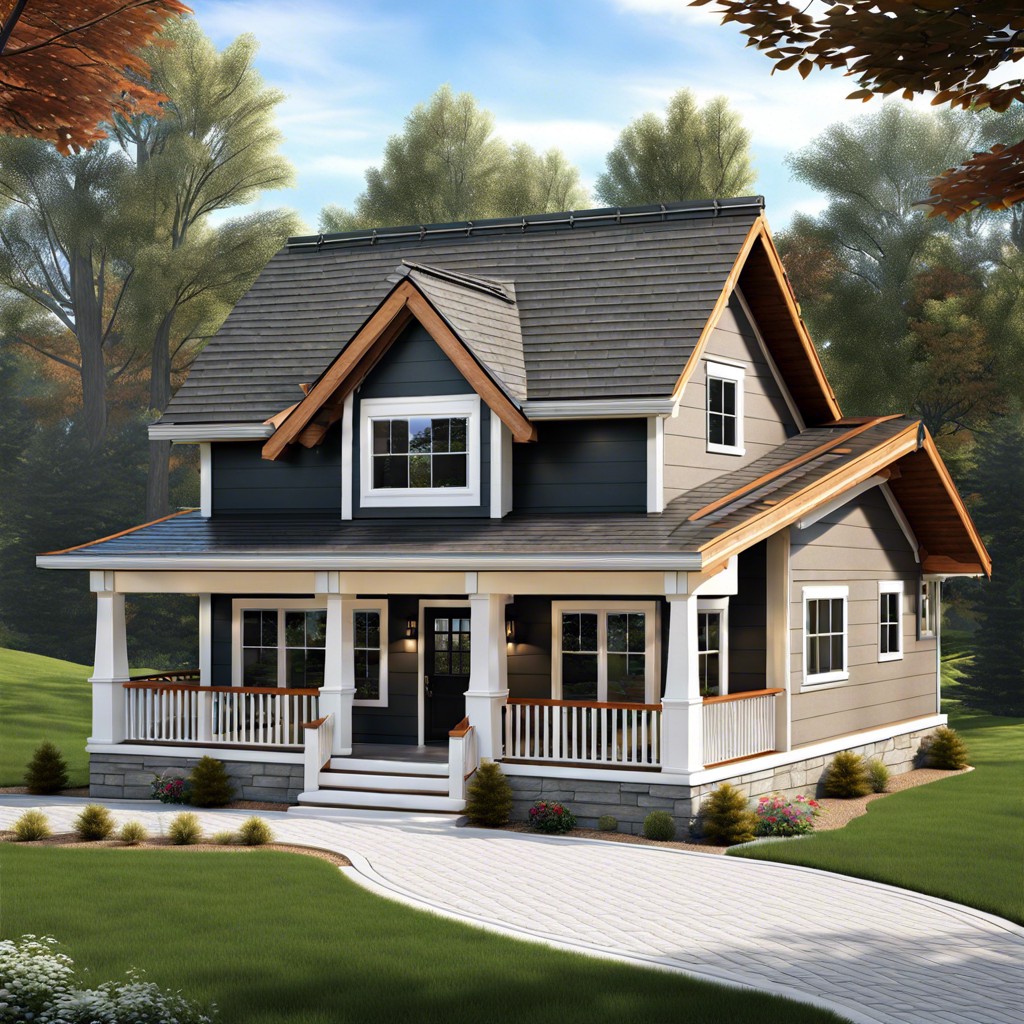Last updated on
Discover what factors influence the cost of getting a new roof and how you can prepare for this significant home investment.
Key takeaways:
- Cost per square foot ranges from $3.50 to $5.50.
- Labor costs depend on complexity, tear-off, speed, and location.
- Geographic location affects cost.
- Choose a licensed contractor, check references, and compare quotes.
Roofing Cost Per Square Foot

Understanding the cost per square foot for roofing can save any homeowner from budgetary blues. Typically, this price can range between $3.50 and $5.50 for asphalt shingles, the most commonly used material. However, for more high-end materials like metal, slate, or tile, prices jump significantly, from about $10 to a skyscraper-high $35 per square foot. These estimated costs include both materials and installation, so they give a good ballpark figure to start with.
Remember, size matters! The bigger your roof, the more material and the more labor needed, which in turn stretches the old wallet further. Calculating your roof area, therefore, becomes an essential step before summoning the contractors. More square footage generally means a better unit price, thanks to the scaling effect—buying in bulk often comes with a discount, even in the roofing business!
Labor Costs
Getting a new roof isn’t just about slapping on shingles! Labor costs can be like a sneaky breeze lifting your budget off the ground if you’re not careful. Here’s what impacts these expenses:
- Complexity and Size: A larger or more complex roof shape (think hips, valleys, and gables galore) requires more time and skill, which means higher costs.
- Tear-off Requirements: If your old roof needs to be removed, the additional labor for tear-off adds to the cost. It’s like needing to clear out your attic before you can convert it into that dream game room!
- Installation Speed: Want it fast? Speedy installation can increase labor charges. It’s like paying for express shipping on your online shopping spree.
- Local Labor Rates: Depending on where your house sits on the map, local labor rates can vary. It’s like the difference in price for a cup of coffee in Manhattan versus Montana.
Understanding these points helps in gauging why the labor portion of your roof installation might cost more than just the materials. Choose wisely, and maybe avoid scheduling your re-roofing during peak contractor season to save some extra cash!
Roof Material Costs
Selecting the right materials can feel like shopping in a candy store—but with a significantly higher bill and less immediate sugar rush. Here’s what you’ll generally find on the shelves:
Asphalt Shingles: The most popular choice for their cost-effectiveness and simplicity to install; they typically run between $100 and $200 per square (100 square feet).
Metal Roofing: Durable and long-lasting, but with a heftier price tag ranging from $120 to $900 per square. Prices vary based on whether you opt for panels or shingles, and the type of metal—steel being on the lower end, with copper basking in the high-end zone.
Tile Roofing: Terracotta or slate tiles offer a stunning look but can also come with a stunning price. Expect to pay between $300 and $700 per square for that fancy, old-world vibe—along with added structural considerations due to weight.
Wood Shingles: These range between $250 and $600 per square, offering a rustic aesthetic that might require more maintenance but can be worth the charm.
Each material has its own set of pros and cons, affecting everything from your home’s curb appeal to how often you might be climbing up there for maintenance. Remember, sometimes you do get what you pay for—roofing edition.
Geographic Location
The cost of installing a new roof can swing dramatically depending on where you live. In bustling cities with a high cost of living, roofing services often come with a steeper price tag. Meanwhile, in more rural areas, you might catch a break on those costs.
But why stop at urban versus rural? Even the climate you live in can play its part. Regions with harsh, long winters or frequent violent storms may require more durable—and pricier—roofing materials to withstand Mother Nature’s tantrums.
And let’s not forget about local regulations. Certain areas have building codes stricter than a high school librarian, necessitating specific materials or styles that can push the price up. Always consider these local quirks when budgeting for your roof replacement or installation.
Choosing a Roofing Contractor
Selecting the right contractor can be as critical as choosing between shingles or tiles. Here’s how you can nail down the best choice without climbing up a roof!
First, always verify licensing and insurance. This is your safety net, ensuring that you are not liable for accidents and that the work meets local building codes.
Ask for references or check reviews. Previous customers’ experiences might forecast your home’s future rooftop saga.
Get multiple quotes to compare pricing and service options. But remember, the cheapest option might end up being no ‘bargain’!
Finally, consult the warranty offer. A good contractor should back their work with a substantial warranty. It’s like having an umbrella for when it rains, and in your case, it literally might!
Related
- Average Cost of New Roof: What to Expect and How to Budget
- How Much Does it Cost to Replace a Roof on a 3,000 Square Foot House: Cost Guide and Information
- How Much Does a New Roof Cost: Factors and Considerations
- How Much is a Square of Shingles – Cost Analysis and Breakdown
- Roofing Cost Calculator: Your Guide to Budget-Friendly Roofing
